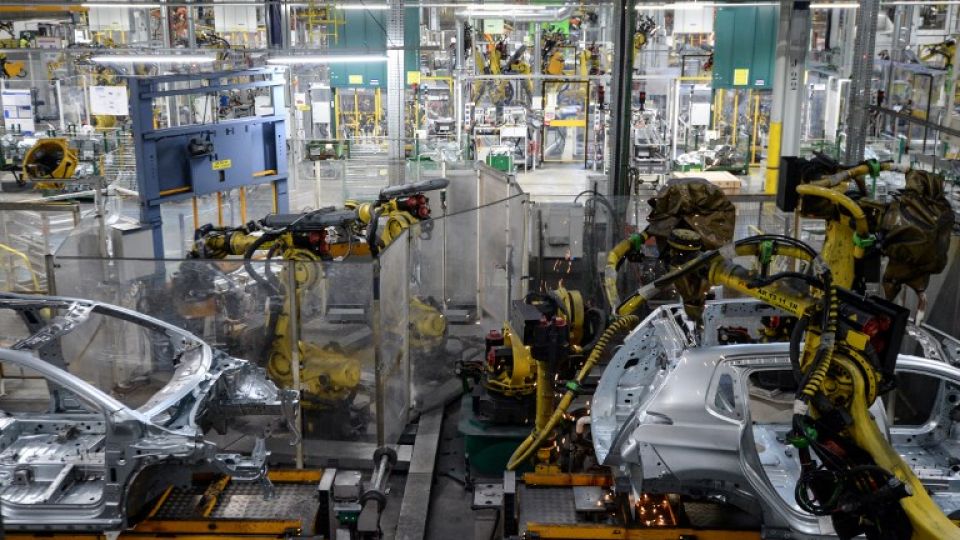October 3, 2018
The revised NAFTA deal that the United States, Mexico and Canada agreed to on Sunday is expected to have a significant impact on Japanese automakers.
The Japanese government is wary that the United States will impose a difficult set of demands in bilateral negotiations over a trade agreement on goods (TAG), using the same tactics it employed in the latest NAFTA renegotiations.
Stricter procurement rules
Japanese automakers use Mexico as an export base to the United States, taking advantage of the country’s low labor costs. They procure auto parts from various countries to minimize costs and assemble the final products in Mexico. U.S. auto sales in 2017 totaled about 17.5 million units, about 40 percent of which were Japanese vehicles.
Four Japanese makers — Toyota Motor Corp., Honda Motor Co., Nissan Motor Co. and Mazda Motor Corp. — have assembly lines in Mexico. They produced 1.37 million vehicles in 2017, and exported about 680,000 of them to the United States.
Under the current NAFTA framework, at least 62.5 percent of a vehicle’s parts must be procured within the three NAFTA countries for the vehicle to be exported to other member countries tariff-free. However, under the revised NAFTA deal, called the United States-Mexico-Canada Agreement (USMCA), the percentage of parts required for tariff-free exports will be raised to at least 75 percent.
In just one example of the deal’s effects, Honda will be required to review production of its Mexico-made HR-V sport-utility vehicle (known as Vezel in Japan), as 67 percent of components in the vehicle are procured in the NAFTA zone.
According to the new agreement’s text, the rate will be hiked either by January 2025 or five years after the new agreement takes effect, whichever comes later.
Ceiling on exports
The new agreement will impose a stiff tariff — expected to be 25 percent — if the number of cars exported annually from Mexico or Canada to the United States exceeds 2.6 million. The measure will decrease cost competitiveness, and likely have an impact on export volumes.
According to Reuters, about 1.8 million cars and sport-utility vehicles were exported from Mexico to the United States in 2017. Light trucks are exempted from this rule, offering a bit of leeway before Mexico reaches its export ceiling. However, Japanese automakers have made efforts to cut costs, and their exports from Mexico had been expected to increase.
“We’ll be pressured to review our current strategy of simply increasing production in Mexico, where we can produce cars at low cost,” an executive of a Japanese automaker said.
Meanwhile, Japanese automakers have established a supply chain in the vicinity of the Great Lakes in Canada and the United States.
In 2017, Toyota sold 2.4 million vehicles in the United States and exported about 450,000 cars from Canada to the United States. Canada’s auto exports to the United States will not soon reach the 2.6 million limit, but Toyota cannot indefinitely increase exports from Canada. Japanese automakers are expected to review their management strategies over time.
Taste of what’s to come?
In NAFTA negotiations, U.S. President Donald Trump threatened to impose a 25 percent tariff and forced Mexico and Canada to accept rule changes that increase production and employment in the United States in an effort to reduce trade deficits. It is highly likely the United States will take a similar approach in TAG negotiations with Japan.
The Japanese government is concerned the United States will demand controlled trade in the automobile sector, just as it did in the NAFTA revision. The United States successfully included in the USMCA the establishment of a macroeconomic committee to take up the issue of foreign exchange rates — a move aimed at slowing currency depreciation and, thus, gaining an export advantage.
If a similar system is introduced between Japan and the United States, it will inevitably constrain Japan’s monetary easing policy, which pushes down the value of the yen.
Japanese government officials are increasingly concerned upcoming negotiations with the United States will prove difficult.
“After the United States experienced success [with USMCA], there’s no doubt that its negotiations with Japan will be tough,” said Mizuho Research Institute Ltd. economist Tamako Nishikawa.


